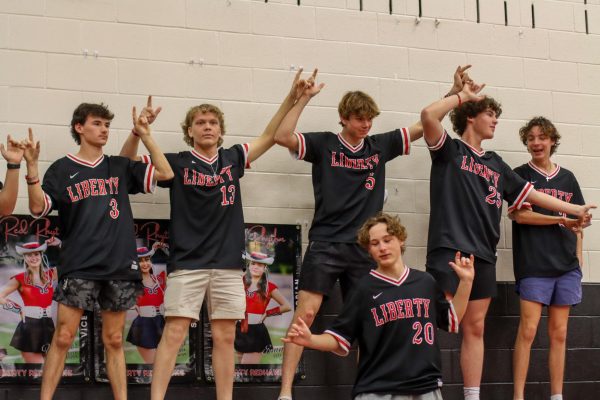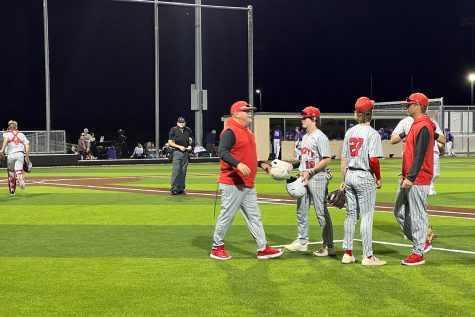Soccer works with IntelliGym technology to sharpen skills
Using what looks just like games at first glance, IntelliGym uses technology to help improve the performance of thousands of athletes.
Over the years technology has been accepted as useful in the classroom. However, in recent years technology has been developed to help athletes excel on the field with the Redhawk soccer teams using IntelliGym, a computer software program that looks like athletes are playing around with spaceships, but in reality they are doing a lot more.
“You really develop cognitive skills, and it really builds your brain over time,” IntelliGym partner and owner of marketing rights Bob Garrity said. “The more neurons you have and neural pathways and synapses you have, the quicker and faster and more intuitive your brain works. It’s less and less sluggish over time.”
We approached the same research team and asked them can this be used in other domains, like training competitive athletes. They looked into the details and they found that this could actually be done.
— IntelliGym CEO Danny Danker
The benefits on the field are equal to the benefits off according to Garrity.
“It helps with school,” he said. “Anything can help with, memory and focus is obviously helpful for a student.”
The software’s original intention had nothing to do with sports.
“I was an officer in the Isreali Air Force and I came across this training concept when I was in the flight academy,” IntelliGym CEO Danny Danker said. “We were flying jets and using all kinds of training tools and technology. The research of this was actually highly confidential at first but then after it had become declassified, we approached the same research team and asked them can this be used in other domains, like training competitive athletes. They looked into the details and they found that this could actually be done.”
Working in Israel and working with American sports, miles weren’t the only problem Danker faced.
“The challenge is also the cultural difference because I am an Isreali, I am not an American,” he said. “I do not think like an American and there is a cultural barrier. The way we are trying to cope with that is being in the U.S. a lot, and I do a lot of interviews. On top of that we hire local people.”
Those interviews helped introduce Danker to boys’ head soccer coach Fred Kaiser.
“Basically how I heard about it I had a call from one of the club coaches in the area,” Kaiser said. “He’s like, hey, this guy he’s based out of Israel’s trying to understand the American market because we’re so different from everybody else in terms of high school and club and U.S. Soccer, and all the other divisions. He’s trying to get a rundown on so how to mark this market.”
The meeting between the two of them helped to get IntelliGym into Texas high schools.
“When I talked to the founder he came in from Israel,” Kaiser said. “I sat down with him for several hours and kind of explained how soccer works in the United States to him and the best opportunities for marketing. Eventually, he came to TASCO (Texas Association of Soccer Coaches) and came down to our clinic in November and they did a couple of presentations.”
I’m trying to look for any advantage I can get for my players. It’s been pretty impressive, honestly, more than I thought it would be.
— soccer coach Fred Kaiser
Beyond breaking into the Texas high school soccer market, there were other obstacles faced by IntelliGym, like getting people to expect the idea of technology in sports.
“The biggest challenge we had is probably the same you have with any new concept. There is a classic adoption curve,” Danker said. “This for us I would say is a challenge, we need to approach both sport players’ parents, and coaches. We need to convince them of this new concept. We know that there is a very solid and extensive science and research behind it that explains while a simulation works and getting this message across is our biggest challenge.’
Kaiser even struggled with this at the beginning.
“As a coach it was difficult for me because I grew up very old school. It was difficult for me to wrap my mind around,” Kaiser said. “I’m trying to look for any advantage I can get for my players. If it passes the eyeball test and delves into it. I am still personally skeptical even though I see the evidence that it actually works. It’s kind of one of those things where I want to see more and more of it, but from what I’ve seen so far it lines up exactly as advertised. It’s been pretty impressive, honestly, more than I thought it would be. I hope he keeps delivering. He’s delivered on everything they said it would so far I just hope he keeps going.”
This is not the first piece of technology Kaiser has used with the boys’ soccer program, but he finds it the most accessible for his players.
“A lot of people are starting to pick up on it now because it’s all virtual learning,” Kaiser said. “I mean, as long as you have a computer and a mouse, you can do it.”
The software is already paying off for sophomore soccer player Alex Asmus.
I enjoy participating in IntelliGym as I’ve seen my ability to recognize plays and respond increase dramatically
— sophomore, soccer player Alex Asmus
“I enjoy participating in IntelliGym as I’ve seen my ability to recognize plays and respond increase dramatically,” Asmus said. “I think it benefits defenders more as we are needed to recognize the quick changes in offensive tactics that other teams use against us.”
As of now IntelliGym is only available for soccer, hockey, and basketball players, but the company hopes to expand to other sports.
“Nearly everyday we get emails asking when will you have IntelliGym for swimming, when will you have IntelliGym for Rugby,” Danker said. “We are being asked but the thing is we need to focus and we are a small company. We have so many resources researching, marketing, and selling all over to do the next sport it would take time because we don’t have the resources to do all of those things together.”

Remi Williams is a senior and starting her fourth year in Wingspan. At school she is involved in Student Council, on the Girls soccer team, and is Historian...










